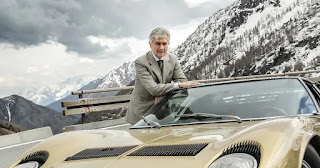The lost BMW
Garmisch an interesting story behind a vanilla sedan, the famous Italian
designer Marcello Gandini had designed a small 4 door BMW sedan in the year
1970, the car was supposed to be a concept. This concept showcased what the
future sedans were going to be. But what happened later makes this car more
interesting.
About the designer
Marcello
Gandini was born on 26th august 1938 in Turin, Gandini approached
Bertone group of design for a job but was denied. Gandini’s design extends
beyond cars as he is also an industrial designer and a home accessories. He was
the head designer until 1980 in Bertone, after this changed his path to become
a freelance designer.
BMW has had a
long history with Italian design houses such as the BMW 328 mille miglia
designed by Peter Szymanowski

The BMW
Garmisch was an idea that originally came from Nuccio Bertone himself who
wanted to showcase this car as a surprise car at the Geneva motor show to mark
the positive relationship between Bertone and BMW. The design language was to
follow that of BMW which meant it was going to be very dynamic, and proactive. The
Garmisch was a sleek and clean design with Gandini’s signature honey-comb mesh
covering the rear glass. The two door midsize sedan was finished in this
champagne color. The vertically stacked kidney grill is a first and a pretty
attractive twist on the traditional kidney grill.
The interior
was pure perfection and met the demands of the 1970’s. The passenger side of
the dash opened to a large mirror, vertically stacked AC controls and radio
controls made up the middle of the dash, followed by the gear shifter. The re-created model of the Garmisch was built
on the BMW 2002’s rolling chassis.
The only proof
that such a concept existed was word of mouth and five sketches of the concept,
the actually car is nowhere to be found, BWM chose to rebuild this particular
car as it a true stand out in the modern range of BMW cars and even in the
present SUV dominated era. The car is named after a once-prominent upper-crust
German ski village that played host to the 1936 winter Olympics, the car stands
out to me and many others not just with modern BMW’s but with old one’s as
well, because it looks like a fish bowl from certain angels. Over all it still
remains a car with a very murky background and remains an oddball in BMW’s
lineup of cars, an oddball that has a story to tell. The car also shows us the
era when BMW relied on the big Italian design houses.





Comments
Post a Comment